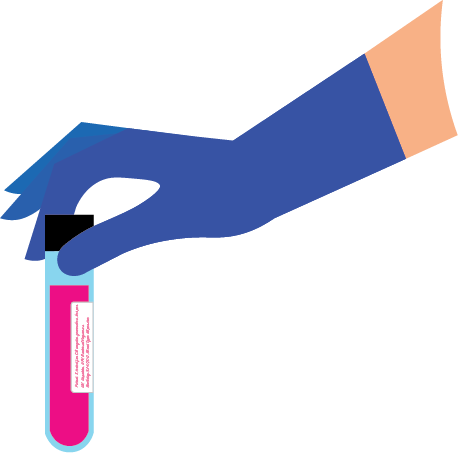Sixty-six percent of college students reported having sex in the past 12 months, according to a 2018 National College Health Assessment survey. However, according to the Journal of the American Sexually Transmitted Diseases Association in 2016, only about 8% of male college students and 20% of female college students reported getting tested for sexually transmitted infections (STIs) in the past 12 months. These numbers don't add up. Why?
STI testing should be a normalized part of sexual health, yet it often carries stigma and a level of unearned embarrassment that it's time to do away with. An STI scare can be an anxiety-inducing, uncertain event. The last thing anyone should worry about while they navigate a stressful sexual health experience is the appointment and testing process. I decided to get STI tested, just to prove to everyone that it's no big deal. Spoiler: It was no big deal.
Before setting out to write this article, I had never been STI tested or even looked into making an appointment. I realize this makes me part of the problem, but luckily for me, making an appointment with Northwestern Medicine was very easy. Similar to scheduling any other appointment with Student Health Services, all I had to do was head to mynm.nm.org, log in and make an appointment for an STI screening under the “Sexual and Reproductive Health” category. In fewer than five minutes, I had an appointment within the week.

I got to Searle 10 minutes early and went to check in. There was another student standing in line behind me, and I found myself hoping the administrator wouldn't mention the reason for my visit. The enormous irony of having that thought while on a research excursion for an article on destigmatizing the STI screening process hit me like a bus.
Why did I feel that way? I think it could be because my first instinct was to associate STI testing with having an STI. Wrong. On top of that, I associated having an STI with some level of shame or embarrassment. Wrong. Even further, I assumed this random student standing in line would think less of me for having some connection to STIs. Hopefully wrong.
In the waiting room, I noticed posters on the wall and ads on the TV screen with hashtags like #EndHIVstigma and #GetTested, encouraging students to sign up for STI testing. After speaking with some of the medical professionals who helped me, I learned that these campaigns have created a huge shift in attitudes towards STI testing. Spreading information about how easy and important the process is has resulted in a significant increase in the number of students who get tested. STI screening tests are now one of the most common tests at Evanston's Student Health Services lab.
I was called in for my appointment just six minutes after checking in. After my vitals were taken, I met with the doctor. She began by asking the usual questions many of us have come to expect from a doctor's appointment: allergies, medications, whether or not I smoke, et cetera. After that came the first deviation from all other student health appointments I've had: I answered questions about my sex life.
She asked how many sexual partners I've had, what kind of intercourse I was having and what kind of protection I was using. I found myself more comfortable than I expected answering these questions because they're really just data points to inform the doctor's recommendations for testing or treatment.
"I was honestly shocked at how easy the process was."

The doctor was more than happy to answer my questions about the process, what I was being tested for and how I would get my results. It turned out that to be tested for five of the most common STIs, all I had to do was give a blood and urine sample. The blood sample would test for HIV, hepatitis C and syphilis while the urine sample would test for gonorrhea and chlamydia. One of my big questions was, of course, what if I test positive for something? Put simply, if I were to test positive for an STI, I would make another appointment and head back in to discuss treatment.
The doctor informed me that I was participating in an STI screening — a routine test not connected to a specific worry or set of symptoms — and that STI screenings are recommended for students a couple times a year. The doctor shared that this recommendation changes based on lifestyle. Students with more frequent changes in sexual partners should think about getting STI tested more often.
After all of my questions were exhausted, I headed down one floor to the laboratory. In just nine minutes, I had finished both tests and was on my way out the door. I was honestly shocked at how easy the process was. Pro tip: The urine sample is only considered valid if you haven't peed in the past hour, so if you're on your way to an STI testing appointment, hold it.
Regardless of your sexual habits, if you haven't been STI tested in a while (or ever), I encourage you to take 30 or 40 minutes one afternoon and go do it. Hell, you could even bring a friend!
